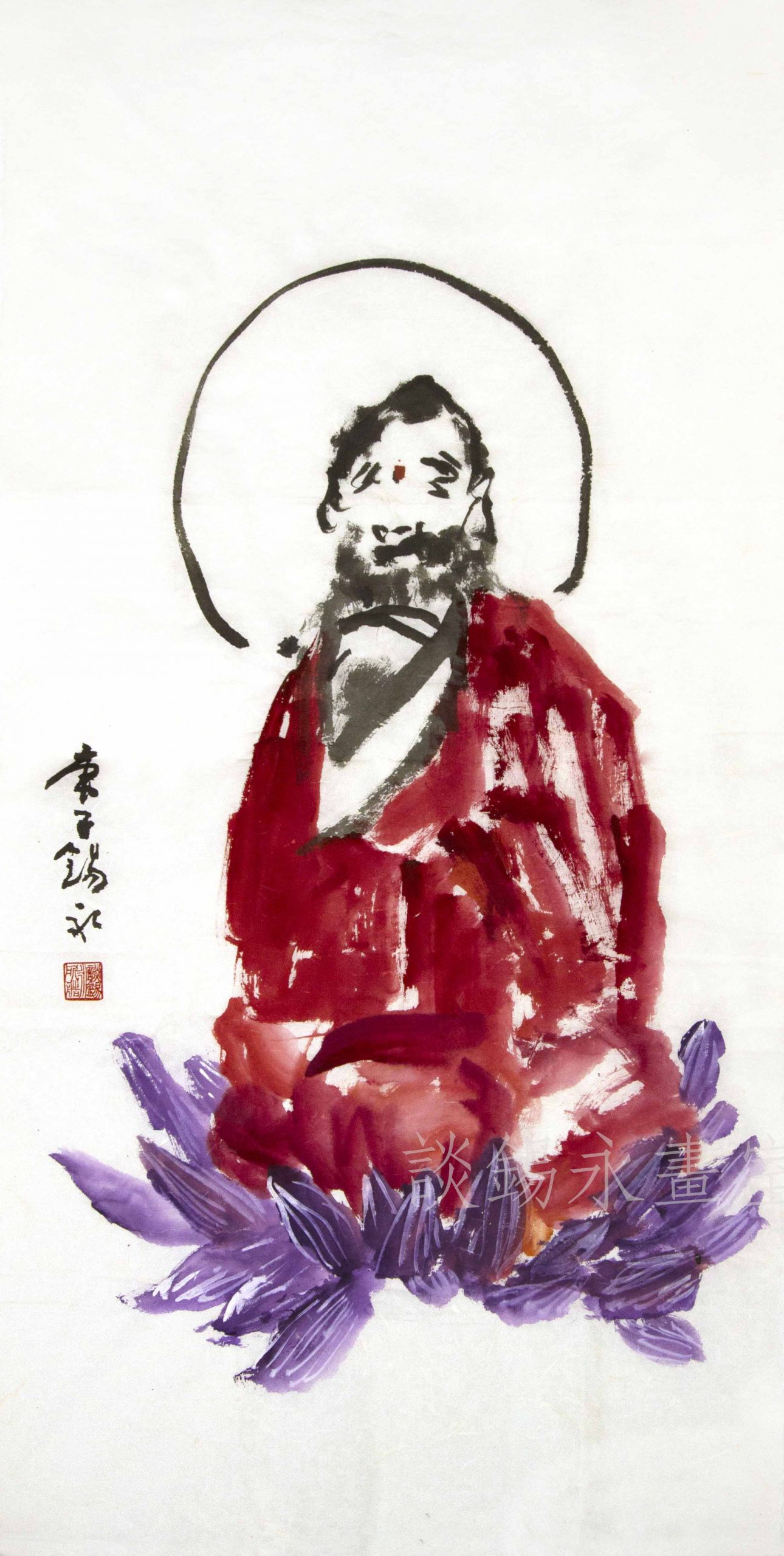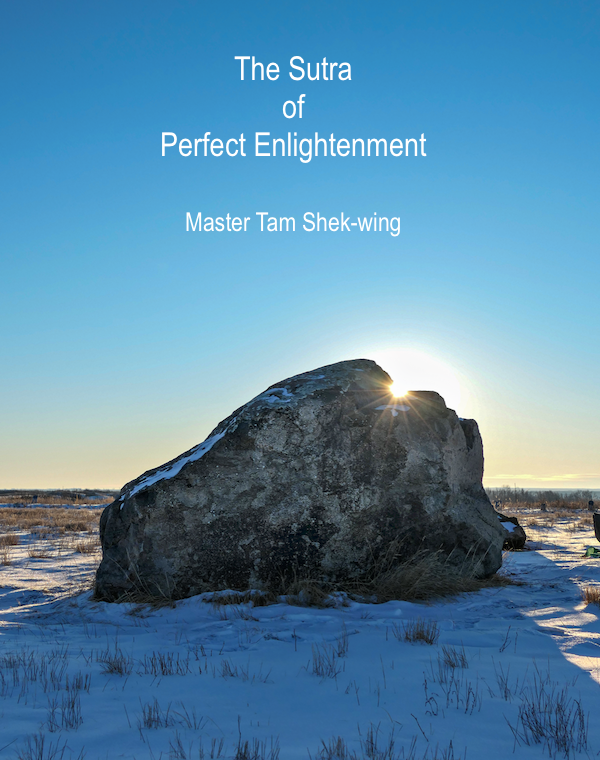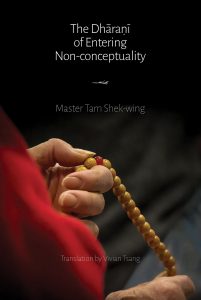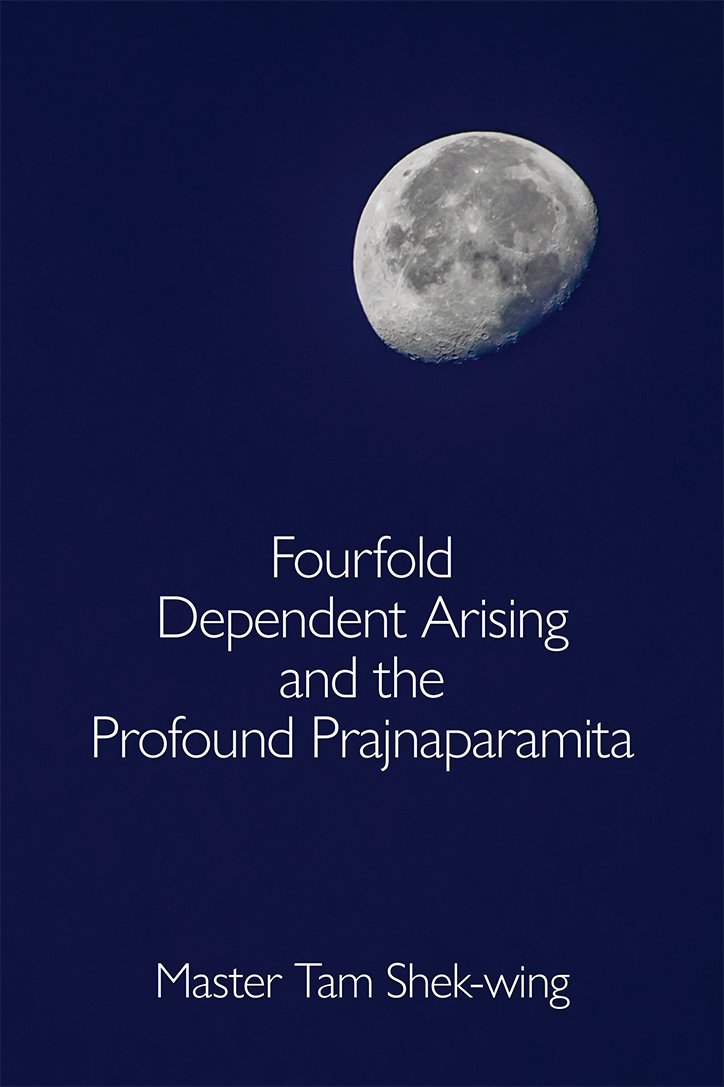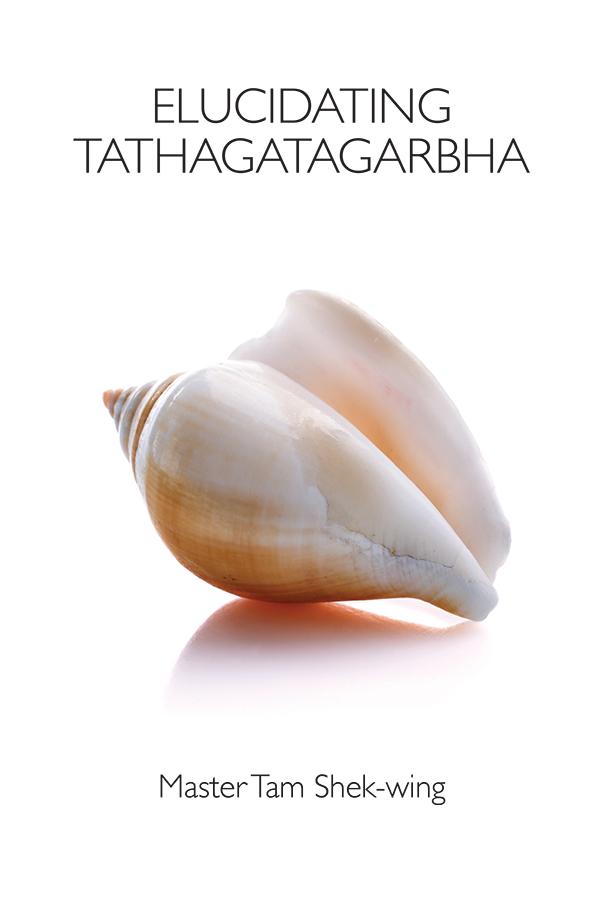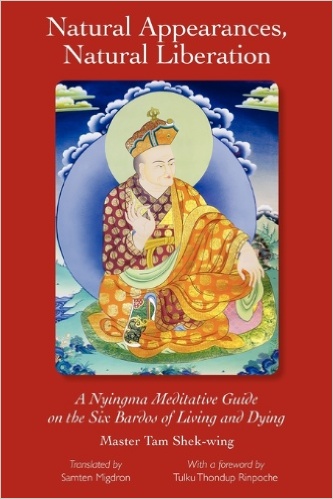Perfect Enlightenment 29: Buddha Reveals the Nature of Phenomena, Part 1
Show scripture (Chinese). 爾時,世尊告淨諸業障菩薩言:「善哉!善哉!善男子!汝等乃能為諸大眾及末世眾生,諮問如來如是方便。汝今諦聽!當為汝說。」時,淨諸業障菩薩奉教歡喜,及諸大眾默然而聽。 「善男子!一切眾生從無始來,妄想執有我、人、眾生及與壽命,認四顛倒為實我體,由此便生憎愛二境。於虛妄體重執虛妄,二妄相依生妄業道,有妄業故妄見流轉,厭流轉者妄見涅槃。由此不能入清淨覺,非覺違拒諸能入者,有諸能入,非覺入故。是故動念及與息念皆歸迷悶,何以故?由有無始本起無明為己主宰,一切眾生生無慧目,身心等性皆是無明,譬如有人不自斷命。是故當知!有愛我者我與隨順,非隨順者便生憎怨,為憎愛心養無明故,相續求道皆不成就。 「善男子!云何我相?謂諸眾生心所證者。善男子!譬如有人百骸調適忽忘我身;四支絃緩,攝養乖方,微加鍼艾,則知有我。是故證取方現我體。善男子!其心乃至證於如來,畢竟了知清淨涅槃皆是我相。 「善男子!云何人相?謂諸眾生心悟證者。善男子!悟有我者,不復認我,所悟非我,悟亦如是。悟已超過一切證者,悉為人相。善男子!其心乃至圓悟涅槃俱是我者,心存少悟備殫證理,皆名人相。 「善男子!云何眾生相?謂諸眾生心自證悟所不及者。善男子!譬如有人作如是言:『我是眾生。』則知彼人說眾生者非我非彼。云何非我?我是眾生,則非是我。云何非彼?我是眾生,非彼我故。善男子!但諸眾生了證了悟皆為我、人,而我、人相所不及者,存有所了,名眾生相。 「善男子!云何壽命相?謂諸眾生心照清淨覺所了者,一切業智所不自見猶如命根。善男子!若心照見一切覺者皆為塵垢,覺、所覺者不離塵故;如湯銷氷無別有氷,知氷銷者,存我、覺我亦復如是。 Show scripture (English). Then the World Honoured One, addressing the bodhisattva Purifier of All Karmic Hindrances, said: “Excellent, excellent! Good son, you have asked well for sentient beings of the degenerate age about the skillful methods of the Tathāgata. Listen well, and I shall explain for you.” The bodhisattva Purifier of All Karmic Hindrances reverently and joyfully received this teaching; those in the great assembly became silent and listened. “Good sons, from beginningless time all sentient beings deludedly conceive and attach to the existence of self, person, sentient being and lifespan—they discern these four distortions to be a real self-essence.” “From this they directly give rise to the two states of like and dislike. In this false essence, they again attach to falsehood. These two delusions interact to produce the path of deluded activity [karma], and since there is deluded karma, they deludedly perceive transmigration. Those who come to dislike saṃsāra deludedly perceive nirvana, and because of this are unable to enter pure enlightenment. It is not that enlightenment rejects those who are capable of entry—rather, it is because those capable of entry do not awaken and enter. Therefore whether one’s thoughts are jumping around or silenced—both conditions ultimately revert to delusion. Why? Because there is beginningless originally arisen ignorance which becomes the subjective ego; thus all sentient beings produce the eye of ignorance. The various natures of body, mind, etc., are nothing but ignorance. Take for example the person who does not want to end his own life. Therefore, you should know there is enjoyment of selfhood when things go well. When things don’t go as one likes, then hatred and anger arise. Since this mind of like/dislike nourishes ignorance, those who strive to cultivate the way never attain it.” “Good sons, what is the trace of self? It is that which is witnessed by the mind of sentient beings. Good sons, when you are in good health you naturally forget about your body. But when the body becomes sick, and you make an effort correct the infirmity, with the slightest application of moxibustion and acupuncture you are immediately aware of your existence as a self. Thus, it is only in reference to this witnessing that you perceive and grasp to an apparent self-essence. Good sons, every kind of witnessing from this level up to the Tathāgata’s perfect perception of pure nirvana, is all the trace of self.” “Good sons, what is the trace of person? It is the cognition by sentient beings of the prior witnessing. Good sons, once the self is cognized it is not again recognized in the same way. It is the same in the case where that which is cognized is non-self. This cognition which has gone beyond every kind of witnessing, is the trace of person. Good sons, if, from this level of basic recognition of self up to the perfect recognition of nirvana as self, completely including the witnessing of principle, there remains in the mind even the smallest remainder of cognition, all are called the trace of person. “Good sons, what is the trace of sentient being? It is that which is beyond the self-witnessing and cognition of the minds of all sentient beings. Good sons, take for example the person who says ‘I am a sentient being.’ What this person has called sentient being, is neither self nor other. Why is it not self? Since self is sentient being, it is not self. Why is it not other? Since the self is sentient being, therefore it is not other. Good sons, what sentient beings realize in witnessing and realize in cognition is nothing more than the traces of self and person. That which does not reach the traces of self and sentient being, yet which remains as realized, is the trace of sentient being.” “Good sons, what is the trace of lifespan? This refers to that which sentient beings realize through the mind’s illuminating pure awareness, that which is not perceivable by the totality of karmic wisdom is just like the life-faculty. Good sons, when one sees with the mind’s illumination, all these awarenesses are nothing but defilement. It is like hot water melting ice: there is no discrimination of the existence of ice or knowledge of the ice’s melting. The existence of a self and the awareness of a self are just like this.” To answer Purifier’s question, Buddha answered in four parts. The first part illustrates how sentient beings are deluded by four appearances. They are the appearances of self, person, beings, and beings of longevity (“lifespan” in the text). On the four appearances. Sentient beings are attached to these four appearances since beginningless time. As per the earlier text, they “mistakenly take the Four Elements as the attributes of their bodies and the perceived shadows of the Six Objects as the attributes of their mind,” mistaking the five aggregates as the characteristic of self, mistaking birth and extinction, the cyclical existence as the characteristics of person; mistaking the alternation between good and bad, the continuum of happiness and sadness, the continuum of changes as the characteristics of sentient beings, mistaking life as the perpetuality of vitality as the characteristics of longevity. Here beings with longevity include arhats as well as bodhisattvas who have yet eliminate their attachments to selves. The second part illustrates how the four appearances gives rise to further confusions. On how one mistakes the delusion as reality. Not knowing the reality that exists originally, one mistakes the delusion as substantial. The delusion gives rise to further confusions in stages. Practitioners beware. It is not that the enlightenment that enters, nor is there enlightenment that rejects, but rather, “there is beginningless originally arisen ignorance” in one’s mind. One is governed by this ignorance such that one becomes trapped by the attachment to self. When there is an attachment to self, one cannot let go anything, the same way that no one would willingly give up one’s life. With the persistence of ignorance, likes and dislikes arise. Such likes and dislikes give rise to further ignorance, in turn ignorance and likes/dislikes give rise to each other in perpetuality. This is the fundamental delusion such that one is unable to enter the path of practice. In the third part Buddha further explains the four appearances (“traces” in the text). The four traces refer to four stages of realization in one’s practice. At first, one cognizes the self, from which it proceeds in stages as the trace of person, sentient beings, and longevity. On the trace of self. 1. The trace of self. A person is not always aware of his or her body, but when something happens, one naturally grasps at one’s body as the self. The scripture says, “[W]hen the body becomes sick, and you make an effort correct the infirmity, with the slightest application of moxibustion and acupuncture you are immediately aware of your existence as a self.” Taking one’s body as a self, this is essentially ignorance as the self. This realization is not because of enlightenment, but rather, because of ignorance. Similarly, one can also become attached to tathāgata as the self, such as “I have become tathāgata.” One may also become attached to nirvāṇa, such as “I am in nirvāṇa.” Therefore, to speak of attachments of self and traces of self, one should know that this is one’s ignorance grasping at the realization. This is not the same as what most people consider as “I am naturally myself.” Not knowing ignorance being the issue, it is difficult to eliminate it, the trace of self. Consider emptiness, for example, if one believes one has realized emptiness, the practitioner’s sense of self has yet to be eliminated. On the trace of person. 2. The trace of person. If the trace of self has been eliminated, one may then become trapped by the trace of person. This does not refer other people, we are still discussing the practitioner’s own personhood, but now it is no longer an attachment to oneself as the self. Not attached to oneself can be a form of realization, for it surpasses the self. However, it may become the trace of person. The trace of person can also be a form of realization. But just like the trace of self, it is the cognition of realization. Even with a tiny trace of cognition, regardless of how thorough one’s understanding is, it still falls within the trace of peron. If bodhisattva practitioners have the intent of “I practice this or that dharma,” no matter how well one’s understanding is, it must fall within the trace of person. This is why it is said that sectarian biases should be eliminated in the practice. On the trace of sentient beings. 3. The trace of sentient beings. What is the trace of sentient beings? This refers to places where self-realization has yet to reached. The scripture calls it “that which is beyond the self-witnessing and cognition of the minds of all sentient beings.” The scripture gives the example of a person who proclaims “I am a sentient being,” who considers themselves as neither self nor other. Why not self? I am “sentient being,” therefore it is not a self. Why not other? “I” am sentient being, therefore it is not other. But everyone knows that “I am sentient being” and “other is also sentient being.” This type of practitioner who grasps at the meaning of sentient being, cognizes it as neither self nor other. At the time of realization, one becomes trapped by the conceptualization, thereby believing one has become liberated from the trace of self and the self of person. Here the trace of sentient beings is a case of being trapped by words and concepts. In truth, all words and concepts can become a trap at the time of realization. Examples include “dependent origination,” “consciousness only,” “emptiness.” The traces of dependent origination, consciousness only, emptiness, these are all the trace of sentient beings. This is why Prāsaṅgika of Madhyamaka and the Great Madhyamaka insist on not establishing their sects. The establishment of sects begets sectarian views, the trace of sectarian views. On the trace of sentient beings. 4. The trace of longevity. Theravada practitioners entering nirvāṇa are called beings of longevity. In fact, bodhisattva practitioners entering nirvāṇa are also called beings of longevity. Entering the longevity refers to a practitioner who dwells in nirvāṇa but cannot leave. How can one enter nirvāṇa but cannot leave? According to the scripture, it is to “realize through the mind’s illuminating pure awareness, that which is not perceivable by the totality of karmic wisdom is just like the life-faculty.” At nirvāṇa that is yet ultimate, one can yet coalesce ālaya with the nature of phenomena, it is only ālayavijñāna (the storehouse consciousness) that coalesces with ālaya, thus giving rise to “the totality of karmic wisdom,” but this wisdom is not yet self-illuminating, the practitioner enters ālaya as nirvāṇa. This state of wisdom realization is the trace of longevity. Calling it nirvāṇa because one has entered cessation-extinction. Therefore the scripture says, a practitioner who grasps at the trace of longevity, one’s mind is capable of illumination. The previous three types of awareness are all defilement for there exists the duality of subject and object, the subject and the object of awareness are not free from defilement. Practitioners with the trace of longevity have surpassed defilement, like hot water melting ice, where there is no longer ice. When the defilement of the previous three types is eliminated, though free from the duality of subject and object, the practitioner of longevity still grasps at the awareness like grasping one’s life-faculty. As in the analogy of hot water melting ice, while there is no longer ice, one becomes attached at the melting. This completes the discussion of the four traces. Buddha would formally discussed the revelation of the nature of dharma next.Chinese:
English:
Commentary:



